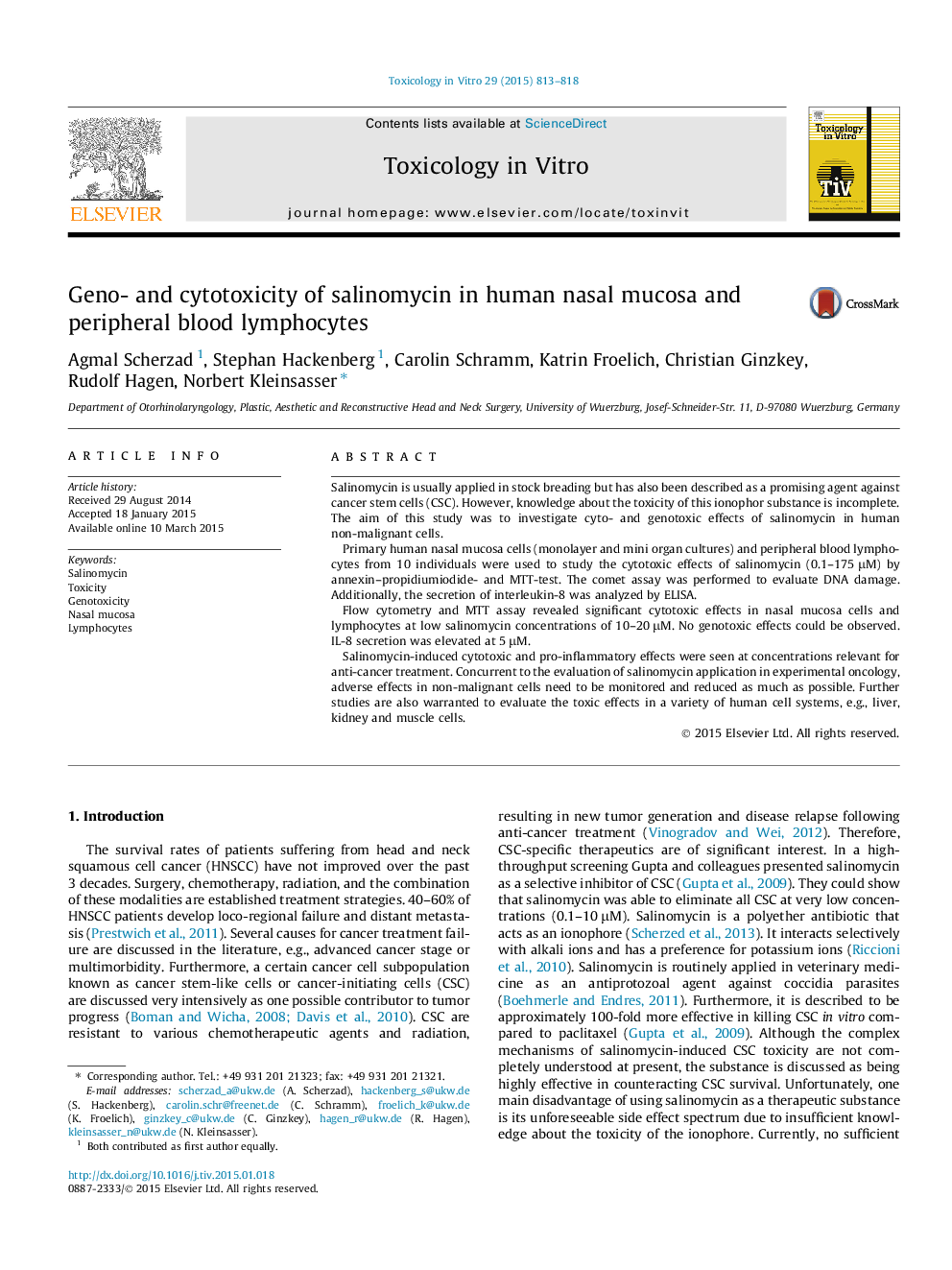| کد مقاله | کد نشریه | سال انتشار | مقاله انگلیسی | نسخه تمام متن |
|---|---|---|---|---|
| 5861907 | 1133768 | 2015 | 6 صفحه PDF | دانلود رایگان |
- Salinomycin induces cytotoxic effects in human non-malignant cells at 20 μM.
- Genotoxic potential was not found.
- The secretion of IL-8 was attenuated at sub-toxic concentrations.
- Toxicity occurs at concentrations relevant for cancer stem cell therapy.
Salinomycin is usually applied in stock breading but has also been described as a promising agent against cancer stem cells (CSC). However, knowledge about the toxicity of this ionophor substance is incomplete. The aim of this study was to investigate cyto- and genotoxic effects of salinomycin in human non-malignant cells.Primary human nasal mucosa cells (monolayer and mini organ cultures) and peripheral blood lymphocytes from 10 individuals were used to study the cytotoxic effects of salinomycin (0.1-175 μM) by annexin-propidiumiodide- and MTT-test. The comet assay was performed to evaluate DNA damage. Additionally, the secretion of interleukin-8 was analyzed by ELISA.Flow cytometry and MTT assay revealed significant cytotoxic effects in nasal mucosa cells and lymphocytes at low salinomycin concentrations of 10-20 μM. No genotoxic effects could be observed. IL-8 secretion was elevated at 5 μM.Salinomycin-induced cytotoxic and pro-inflammatory effects were seen at concentrations relevant for anti-cancer treatment. Concurrent to the evaluation of salinomycin application in experimental oncology, adverse effects in non-malignant cells need to be monitored and reduced as much as possible. Further studies are also warranted to evaluate the toxic effects in a variety of human cell systems, e.g., liver, kidney and muscle cells.
Journal: Toxicology in Vitro - Volume 29, Issue 4, June 2015, Pages 813-818
